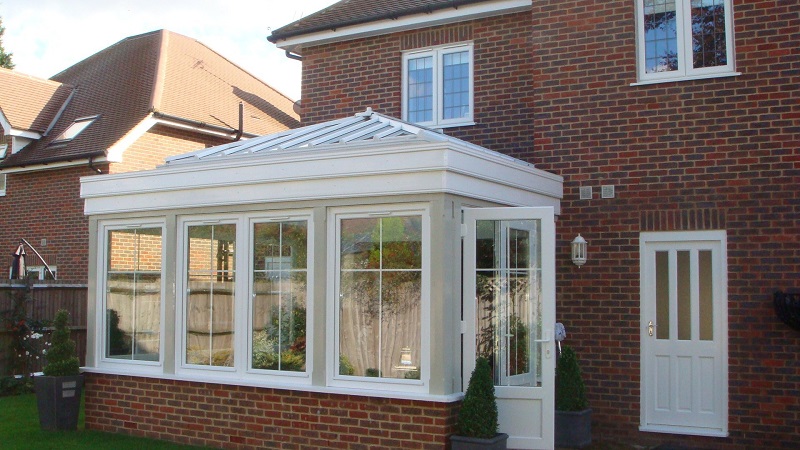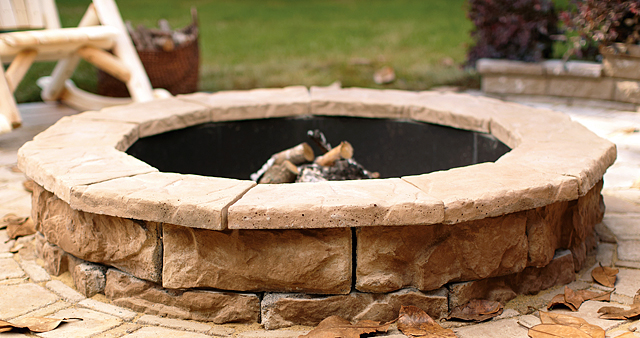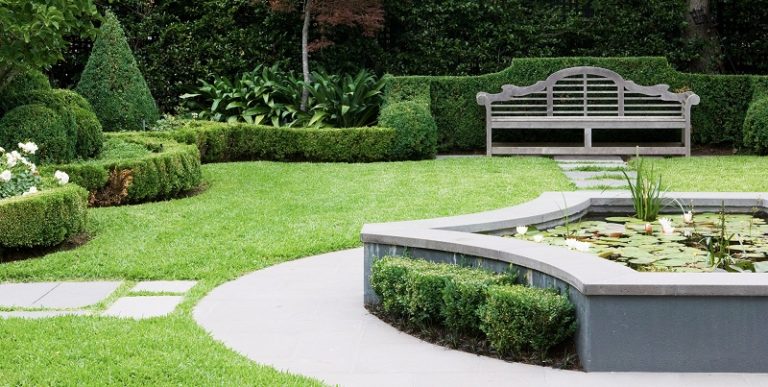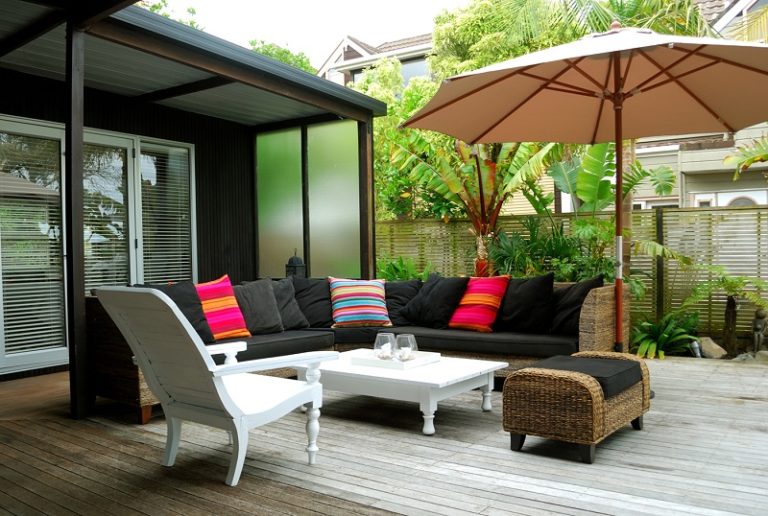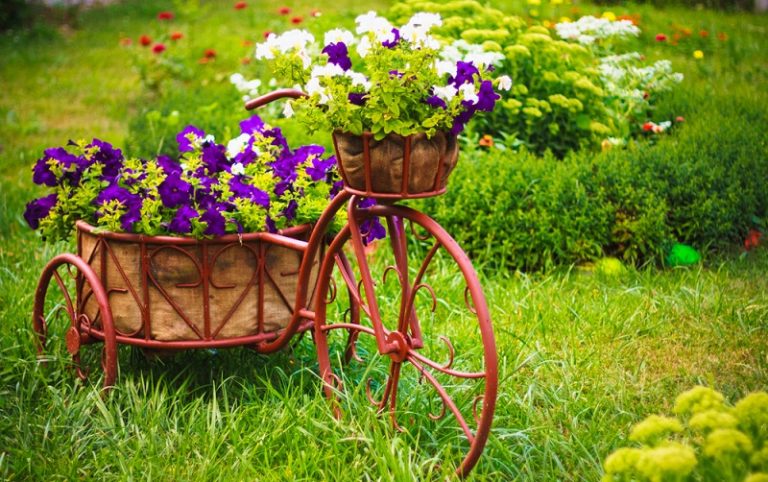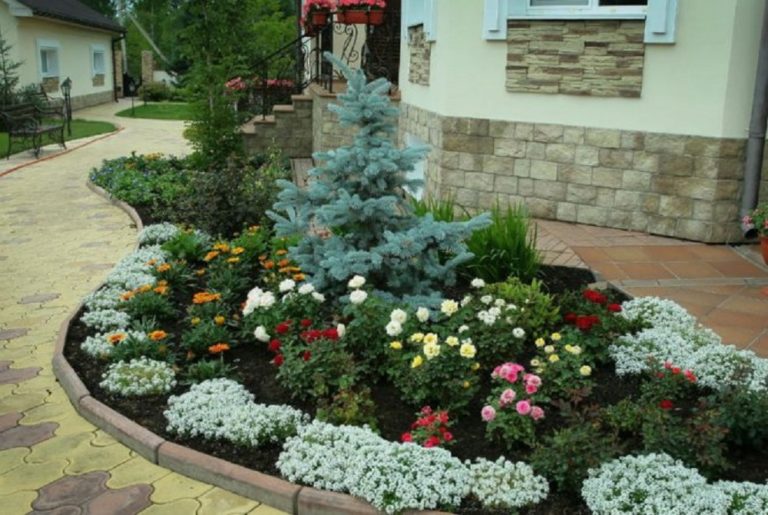Winter garden
The winter garden is an attractive, trendy and modern addition to your building. A winter garden is not a greenhouse or a greenhouse, and the requirements for its construction are completely different.
Winter garden in the modern sense, winter gardens began to appear in Europe at the end of the nineteenth century, when new heating systems made it possible to maintain a specific microclimate suitable for plants even in winter. Since then, the technology of production and installation of heating systems and enclosing structures has been constantly improved, and now only the owner of a palace, but also almost every owner of his own house can decorate his home with a room with a winter garden. But, since residential buildings are structures with increased danger, they can be built only according to the project, which, by the way, in addition to the requirements of strength and reliability, issues of comfort, convenience, maintaining thermal conditions, interior, etc., will also be taken into account.
If you independently approach the design and construction of a winter garden, and even without appropriate calculations, then you can very simply approach the wrong approach, for example, to the choice of glass materials and profiles, which will lead to the destruction of the entire structure. Often, a transparent roof in winter gardens has a rather complex structure and, if it is not properly equipped, so-called “snow bags” will appear, which will not only increase the load on the load-bearing profiles, but can also cause the roof to leak. The reliability of the structure is also reduced by connections using materials of different names, which have not been properly calculated by specialists. Each structural element of the winter garden should be calculated for bearing capacity, taking into account its weight. Often, there is an irresistible desire to save on transoms, vents, door insulation. As a result, the built room loses all meaning and becomes unsuitable neither for people’s recreation nor for the healthy existence of plants, since there will be a lack of ventilation, stuffiness or, conversely, too low a temperature.
But, in addition to an adequate project with a list of profiles and materials that meet the requirements, strict adherence to installation technologies is necessary. Only in this case can you get a magical oasis for winter holidays.
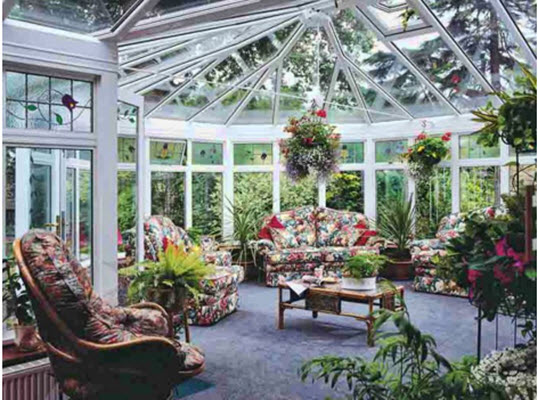
Your contribution to the construction of this structure will be to choose the optimal structure from many others. Here you can choose from several architectural styles. If rectangular (Gregorian) structures allow the most rational use of the internal area, then the Victorian style is characterized by a façade in the shape of a circle, and three-five-beam structures are provided. A one-story house looks best with a Mediterranean-style winter garden design, since it requires a pitched roof, then it will look something like a glazed veranda. Homesteads of the classical style are best decorated with winter gardens in the form of the letter “T”. That is, in the plan there will be two wings with a pediment that protrudes forward. This design is characterized by a fairly high level of lighting. And if you are the owner of a fairly spacious cottage, then pay attention to the winter garden in the form of the letter “P”. This is a cross between the Victorian and Central European styles and here a long gallery with a pitched roof emerges from a three- to five-beam bay window.
The most important and complex structure is the roof of the winter garden, which must also be transparent. Here, in addition to the rather noticeable weight of the glass, snow and wind loads should be additionally taken into account, and properly designed units of adjoining the main building. Neglect of appropriate calculations can lead to serious negative consequences.
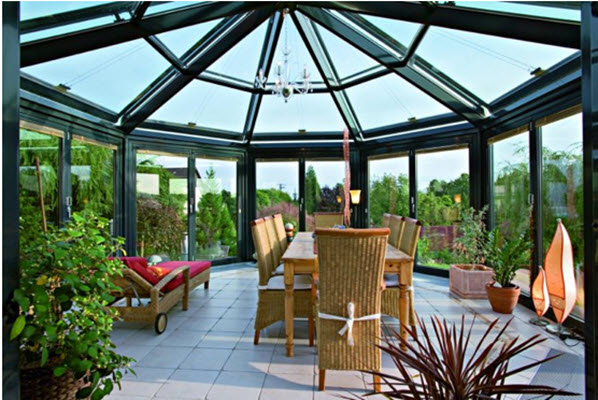
It is also necessary to be meticulous about the selection of materials, especially since the spectrum here is really colorful. Structures made of wood (glued laminated timber) treated with an antiseptic are considered traditional. This profile can be protected from the outside by an aluminum overlay. Thus, the noble interior will be combined with reliable protection from weathering.
But no less popular are structures made of aluminum alloys, which can carry heavy loads and do not require special care. In addition, these profiles are made in a wide range of colors for all tastes.
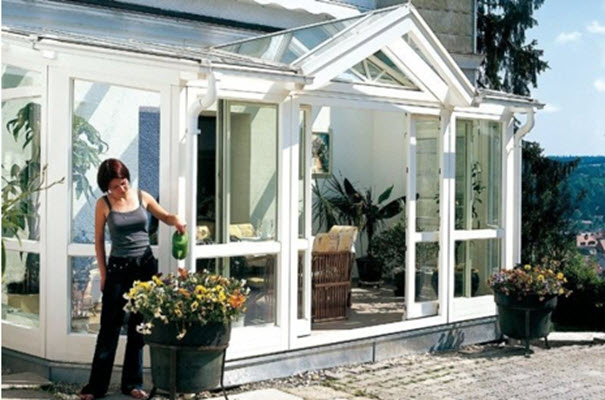
An important property of the profile that you should pay attention to is heat transfer. A warm profile differs from a cold one by the presence of a polymer thermal barrier, it is better to install it in heated rooms. In addition, various kinds of drainage are also provided, draining condensate from structures. In order to save money, PVC profiles reinforced with a metal frame are often used. It is important to remember here that ordinary window profiles cannot be used here, as they are designed only for wind loads.
If you plan to actively use the winter garden in all seasons, you should make sure that the humidity in this room is at least 70%, and the temperature range is 20-25 degrees C. Up to 15 degrees in winter, you can lower the temperature in case of less intensive use of the garden in winter. If the plants are dormant in winter, the temperature in the room cannot be higher than 5-10 degrees C. But it will no longer be possible to have a quality rest in winter in such a room.

As for glazing, mainly single or two-chamber double-glazed windows, with low heat transfer, high energy saving, are provided. Once again, window bags cannot be used here. In addition to low strength, their disadvantages include the ability to break into rough splinters that can injure you. The use of polycarbonate glass is less dangerous and cheaper, but it quickly loses its transparency from weathering and washing with detergents.
Lavender comes in pink, purple, white, and even yellow.

